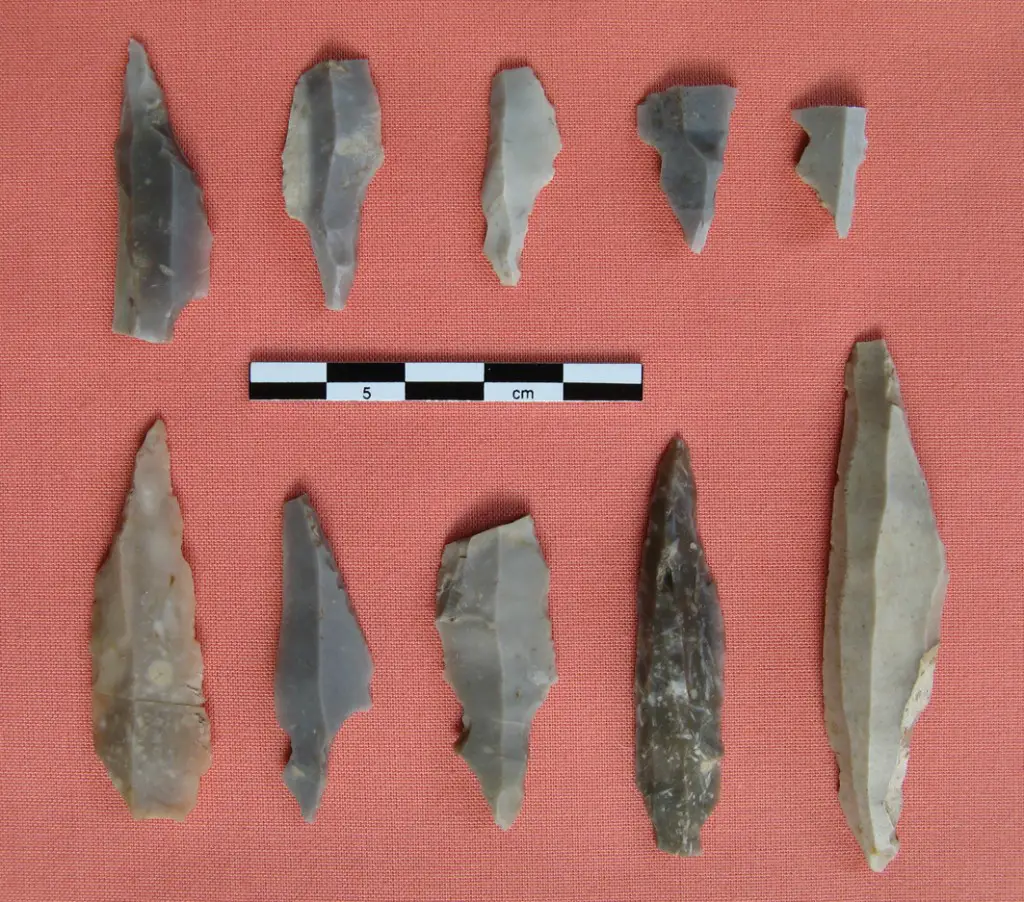An assemblage of over 5,000 flint artefacts was recovered in 2005-9 by Biggar Archaeology Group in fields at Howburn, near Biggar in South Lanarkshire, and subsequent studies have dated their use to 14,000 years ago.
Prior to the find, the oldest evidence of human occupation in Scotland could be dated to around 13,000 years ago at a now-destroyed cave site in Argyll.
Dating to the very earliest part of the late-glacial period, Howburn is likely to represent the first settlers in Scotland. The flint tools are strikingly close in design to similar finds in northern Germany and southern Denmark from the same period, a link which has helped experts to date them.
The new findings were revealed today (9th April) by Fiona Hyslop, Cabinet Secretary for Culture and External Affairs in her speech at the Institute for Archaeologists’ annual conference, which is this year taking place in Glasgow. The definitive findings will be published next year in a report funded by Historic Scotland.
During her speech, the Cabinet Secretary announced over £1.4 million of funding for more than 60 projects in 2014/15 through Historic Scotland’s annual Archaeology Programme, and launched the first Scottish Historic Environment Data (SHED) Strategy, which aims to create a collaborative national public information resource for the historic environment.

The hunters who left behind the flint remains at Howburn came into Scotland in pursuit of game, probably herds of wild horses and reindeer, at a time when the climate improved following the previous severe glacial conditions. Glacial conditions returned again around 13,000 years ago and Scotland was once again depopulated, probably for another 1000 years, after which new groups with different types of flint tools make their appearance.
Fiona Hyslop said: “Our heritage helps us to connect our past, present and future. It reveals stories about where we’ve come from and who we are, and helps us to reflect on who we could be. The discovery of the earliest physical evidence of human occupation in Scotland is hugely exciting, in part because it offers us a very tangible link to the past and a physical reminder of the people who came before us.”
The nature of the physical connections made between the peoples in Scotland, Germany and southern Denmark is not yet understood. However the similarity in the design of the tools from the two regions offers tantalising glimpses of connections across what would have been dry land, now drowned by the North Sea.
Alan Saville, President of the Society of Antiquaries of Scotland, Senior Curator, Earliest Prehistory at the National Museums of Scotland and a specialist in the study of flaked flint and stone tools said:
“These tools represent a real connection with archaeological finds in north-west Germany, southern Denmark and north-west Holland, a connection not seen elsewhere in Britain at this time. This discovery is both intriguing and revolutionises our ideas about where humans came from in this very early period. In southern Britain, early links are with northern France and Belgium. Howburn is just one chance discovery and further such discoveries will no doubt emerge.”
Header Image : One of the artefacts recovered at Howburn. Image shows three views of the same flint point. Copyright Tam Ward
Contributing Source : Historic Scotland






